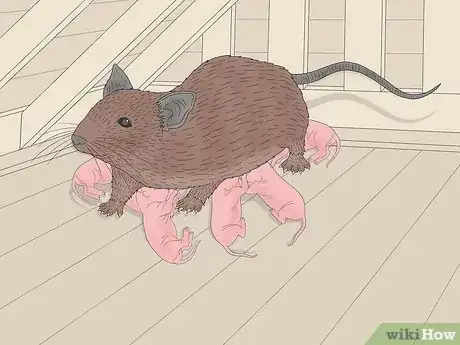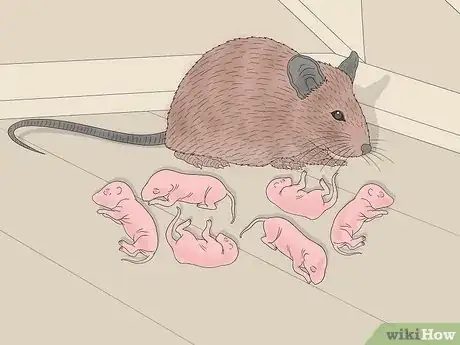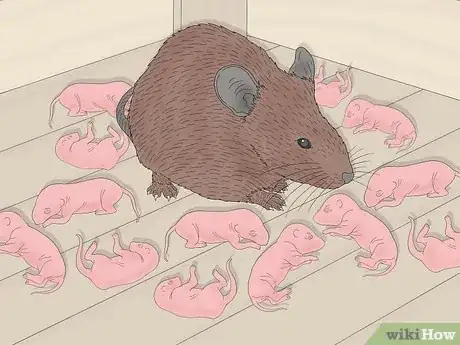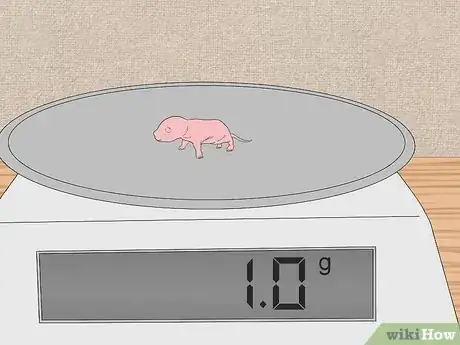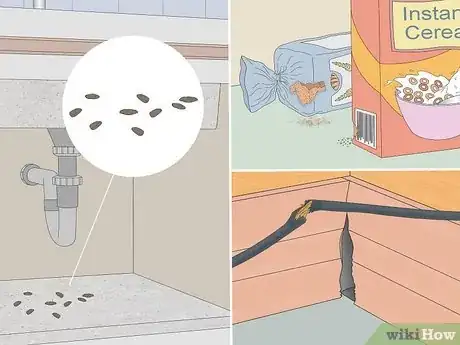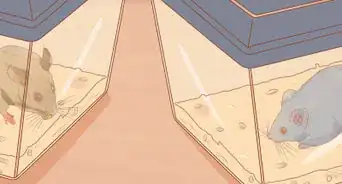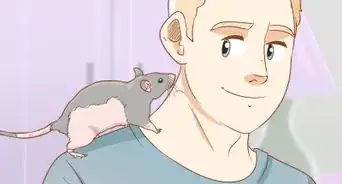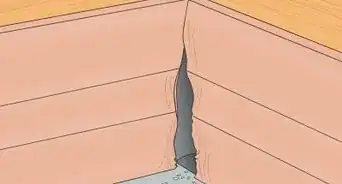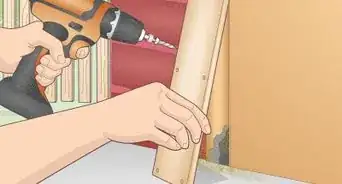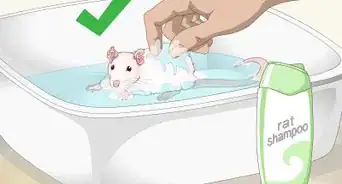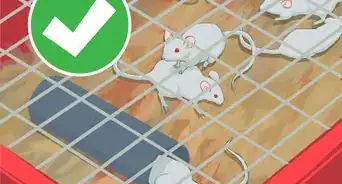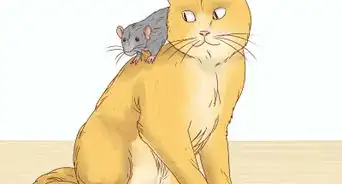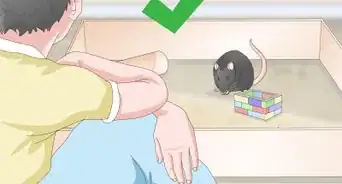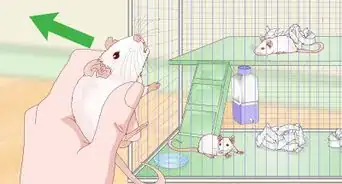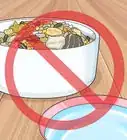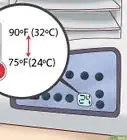This article was co-authored by wikiHow staff writer, Johnathan Fuentes. Johnathan Fuentes is a writer based in the New York City region. His interests as a writer include space exploration, science education, immigration, Latinx cultures, LGBTQ+ issues, and long-form journalism. He is also an avid hiker and has backpacked in Alaska and Newfoundland, Canada. A son of Cuban immigrants, he is bilingual in English and Spanish. Prior to joining wikiHow, he worked in academic publishing and was a freelance writer for science websites. He graduated from Columbia University in 2021, where he studied nonfiction writing and wrote for the student newspaper. He is currently counting down the seconds until the release of Kerbal Space Program 2 in 2023—a game that will almost certainly take up what little free time he has.
There are 9 references cited in this article, which can be found at the bottom of the page.
Learn more...
If you’ve ever seen a nest of baby mice huddled together in a cage, you’ll know that they’re tiny and adorable. But how many babies do mice have at once? And why don’t they have just one or two? The truth is that having multiple babies at a time makes perfect sense for mice. Their small bodies, short lifespans, and rough-and-tumble lives make fast breeding a necessity—and this article will show you why. Keep reading to learn how many babies mice have, why they have that many babies at once, and what to do if you suspect a mother mouse is raising her babies somewhere in your home.
Things You Should Know
- Mice usually give birth to 6-8 babies at a time, but they can have up to 14 at once. Each baby mouse is called a pup, and each group of pups is called a litter.
- A female mouse can have 5-10 litters per year. Baby mice leave their mothers after 21 days, and can start having babies of their own after just 2 months.
- Since mice live about 1-3 years, a single mouse can produce hundreds of babies during its lifetime, which is why mice populations grow so rapidly.
- Use traps or poison to catch or kill mice in your home. If you have a major infestation, have a licensed pest control expert eliminate the mice completely.
Steps
Life Cycle of a Mouse
-
1Baby mice are totally dependent on their mother. When baby mice are born, their ears aren’t fully formed, their eyes can’t open, and they have no fur.[2] The pups rely on their mothers for food, shelter, and safety. For the first 21 days, their mother nurses them with milk, just like human babies.[3]
- After 4 days, a pup’s ears are fully developed.
- After 10 days, their fur grows in.
- After 12 days, their eyes finally open, allowing them to see.
- After 21 days, the young mice set off on their own.
-
2Young mice can have babies of their own at just 2 months old. Mice will breed year-round if they live indoors. Each pregnancy lasts only 18-21 days. This means that a young mouse can get pregnant, give birth, raise her young, and get pregnant all over again in less than 40 days. [4]
- A handful of mice can produce thousands of offspring in just a few generations, which is why mouse populations can grow so rapidly.[5]
Why do mice have so many babies?
-
1Having more babies helps mice survive. Unlike bigger animals, mice are very tiny and vulnerable. They only live for a few years and face constant threats from predators. By having multiple babies instead of just 1 or 2, mice can guarantee that at least some of their offspring will survive into adulthood and make more babies.[6]
- Lots of other animals have many babies at a time. Like mice, most of these animals are small, vulnerable to predators, and don’t live for very long. Having multiple babies at a time (and having babies many times per year) helps their species survive.
-
2It’s much easier for tiny animals to have babies. A newborn mouse pup weighs just over 1 gram, or about as much as a blueberry.[7] Since each pup is so tiny, it takes very little time and energy for a mother mouse to produce a litter of pups. It makes sense for mice to have lots of babies, then, since it takes little energy and helps their species survive.[8]
- Bigger, stronger animals produce much bigger babies, requiring a lot more time and energy from their mothers. This is why larger animals produce fewer babies at a time, and why their pregnancies take much longer.
- A typical newborn human baby weighs about 7 pounds (just over 3 kg). That’s over 2000 times heavier than a newborn mouse. This is why it takes 9 months for a human baby to fully develop.[9]
What should you do if you find mice?
-
1Use traps or poisons to catch or kill mice. Conventional spring-loaded mousetraps, electrical traps, and rodenticide (a.k.a. rat poison) will kill mice. Try to avoid using sticky traps, which hurt mice but don't necessarily kill them. The most humane option is to use a no-kill trap that snaps closed when a mouse goes inside. You can then carry the trap to a location far from your home and release the mouse unharmed.[12]
- Place traps against walls, behind objects, and in secluded areas where you’ve spotted mice droppings or gnawing in the past.[13]
- Avoid using poisons if you have pets or small children in your home.
- Make sure to release a trapped mouse at least 1 mile (1.6 km) from your home, if possible. Otherwise, the mouse may find its way back.
- Handle live and dead mice with caution. Live mice can bite, while a dead mouse can carry disease. Spray dead mice with disinfectant spray (like Lysol or bleach spray), then use a plastic bag to pick up the carcass and throw it away.
-
2Keep your house clean and tidy to make it less friendly to mice. Keep food sources like produce, bird feed, and dry pet food in hard, sealed containers. Clean up food spills and keep trash in covered garbage cans. Keep garages, closets, and utility rooms free of loose paper or woodpiles since mice use these materials to build their nests.[14]
- If possible, find and seal any holes or cracks on the outside of your home. Use a to fill in gaps for crevices in siding, bricks, windows, and even between roof tiles.
-
3Call a pest control service if you have a major mouse infestation. Only a professional pest control expert can completely eliminate mice, especially if there are colonies of mice in your home. Unfortunately, trapping or killing mice on your own may not be enough to eliminate an infestation. Reach out to a certified pest control company in your area that has experience with mice.[15]
- A licensed pest control expert can assess your infestation and use the best possible techniques to eliminate it.
- They also have access to more effective poisons than the general public, which makes it more likely that they’ll be able to get rid of your infestation once and for all.
References
- ↑ https://museumpests.net/wp-content/uploads/2014/03/House-Mouse.pdf
- ↑ https://larc.ucsf.edu/mouse-pup-appearance-age
- ↑ https://museumpests.net/wp-content/uploads/2014/03/House-Mouse.pdf
- ↑ https://museumpests.net/wp-content/uploads/2014/03/House-Mouse.pdf
- ↑ https://animaldiversity.org/site/accounts/information/Mus_musculus.html
- ↑ https://www2.nau.edu/lrm22/lessons/r_and_k_selection/r_and_k.html
- ↑ https://www.researchgate.net/figure/Body-weight-of-B6-pups-from-birth-day-1-until-weaning-day-21-housed-in-three_fig3_261838054
- ↑ https://www2.nau.edu/lrm22/lessons/r_and_k_selection/r_and_k.html
- ↑ https://www.chop.edu/conditions-diseases/measurements-newborns
- ↑ https://extensionpublications.unl.edu/assets/html/g1105/build/g1105.htm
- ↑ https://entomology.ca.uky.edu/ef617
- ↑ https://extensionpublications.unl.edu/assets/html/g1105/build/g1105.htm
- ↑ https://entomology.ca.uky.edu/ef617
- ↑ https://extensionpublications.unl.edu/assets/html/g1105/build/g1105.htm#target3
- ↑ https://extensionpublications.unl.edu/assets/html/g1105/build/g1105.htm

